This month marks the fourth anniversary of Half-Caste Woman, which I can hardly believe. Over the last 4 years, I’ve published 47 dispatches on everything from the invention of the Chinese laundry and the origins of the China doll stereotype, to Anna May Wong’s Asian American contemporaries and her present-day legacy in Hollywood. I’ve done 10 interviews with other AMW experts, scholars, and relations like Yunah Hong, William Gow, Anna Wong, and Susan Blumberg-Kason. And of course, last year I released a full-length biography on the icon herself. Don’t have a copy yet? Not Your China Doll is available for purchase wherever books are sold, including these online retailers.
If you have a few minutes to spare, please take my reader survey. Your feedback helps me to improve the newsletter and keep delivering stories you love to read. In fact, the topic for this newsletter was inspired by a reader’s suggestion!
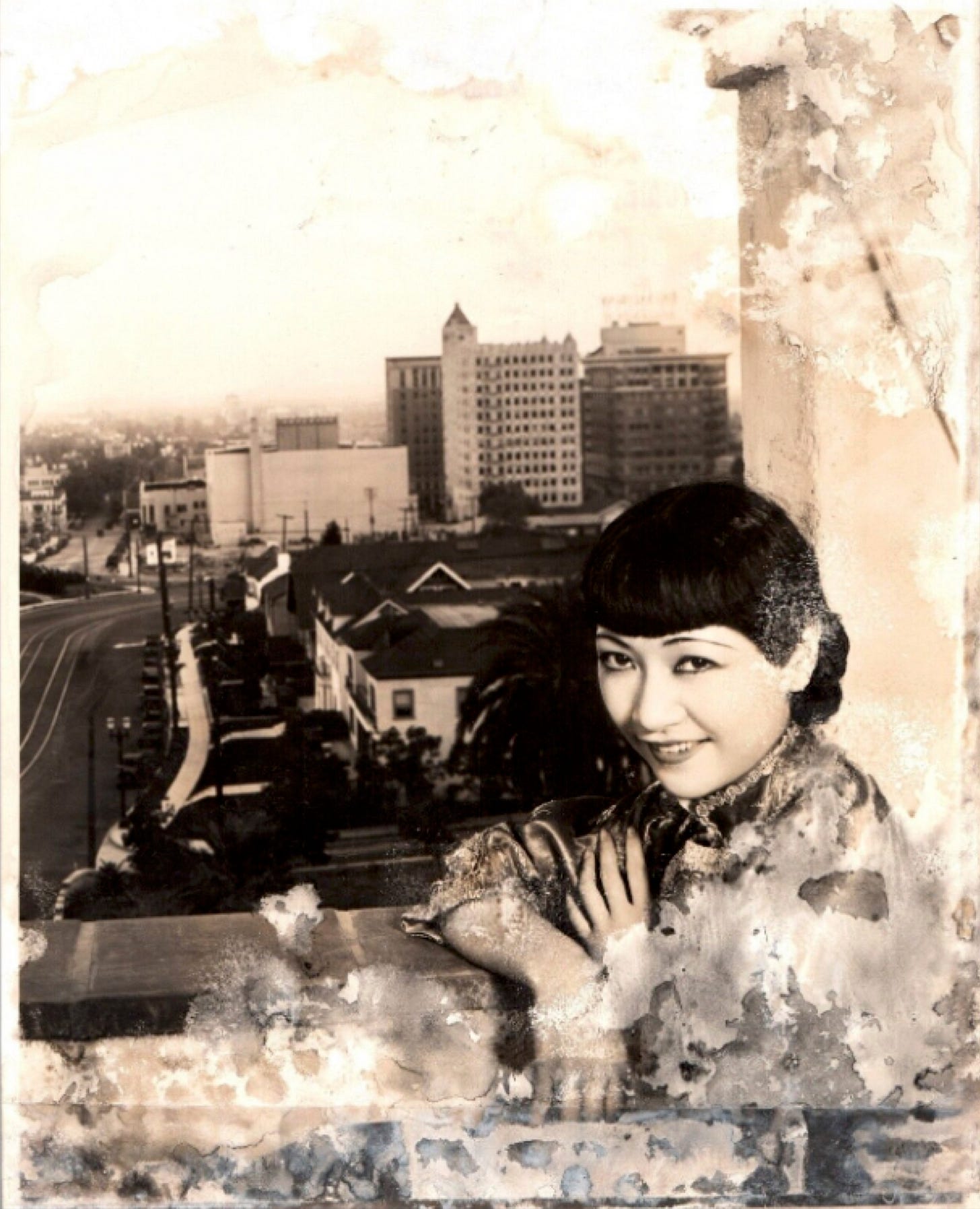
Anna May Wong, cosmopolitan woman that she was, traveled the globe and made her mark on some of the world’s most spectacular cities—Berlin, London, Shanghai, Paris, and New York. But she always came home to Los Angeles, the city that made her. Knowing this inspired me to create a map illustrating the important landmarks from AMW’s Los Angeles. (Originally, I wanted to make maps for all of the major cities AMW lived in, but creating one map proved daunting enough!) I commissioned the very talented Christina Chung to design and illustrate the map and she aced the assignment, as you can see below.
Over the last year, I’ve printed several batches of the map as 5 x 7-postcards that I give out at various functions. Those of you who participated in my pre-order campaign or have attended one of my in-person events likely have one of these fun little cards at home. The QR code on the back leads to my website with a full breakdown of the landmarks and their addresses (though not all of them are still around today). I realized recently, however, that I never properly shared the map in the newsletter, so I thought it would be nice to walk you through these special places from Anna May Wong’s personal life and career—including photos from my own visits to the sites that are still around today.
It’s impossible to talk about Los Angeles without also mentioning the devastating wildfires that have ravaged Southern California over the past two weeks. I watched news coverage of the fires obsessively from New York between texts and calls to friends and family there who had to evacuate with little notice or deal with power outages. Eaton Canyon, where the Eaton fire started, is a place I’ve gone on numerous hikes with family over the years and Altadena, where many lost their homes and most of the fires’ fatalities were claimed, is just a 20-minute drive from Arcadia, where I grew up.
It has been heartbreaking and sobering to see climate change wreak havoc on a place I love with such catastrophic effects. I’d wager that Anna May Wong would feel just as heartbroken if she were around to witness the destruction. With that in mind, I’m dedicating this issue to the places that once made Los Angeles the city it is today, at a moment in its history when entire neighborhoods have been burned to the ground and made unrecognizable.
If you’d like to donate to victims of the fire, check out this list of direct fundraisers or consider this directory of displaced Black families. Many are also giving back to the incarcerated firefighters stationed on the frontlines. If you have been affected by the fires, there are resources available for artists, pop-up camps for kids, free telehealth services, therapists providing pro bono services, and insurance workshops and disaster recovery centers.
And now, without further ado, Anna May Wong’s Los Angeles.

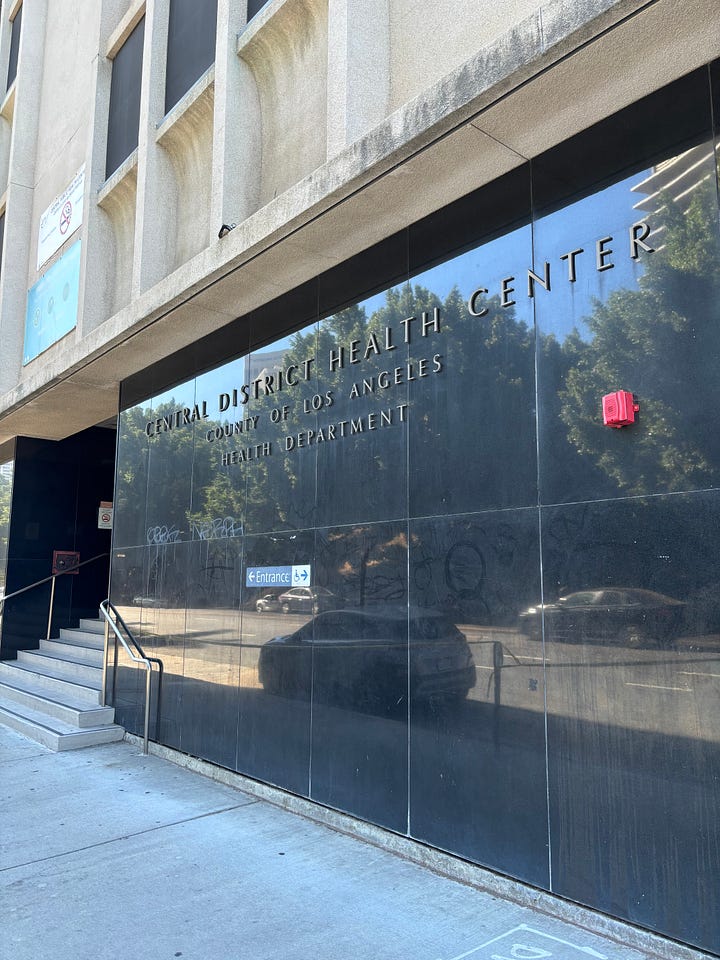
Sam Kee Laundry, 241 N. Figueroa Street
Anna May Wong grew up in her father’s laundry and helped out at the business along with the rest of her siblings. Once her fame as an actress took off, her father built a bungalow in back of the laundry so that she would have a place she could call her own. There she entertained Hollywood actors, artists, and writers over cups of Chinese tea. The Wong family sold the property sometime in the mid-1930s after Wong Sam Sing retired from the laundry business. Today the site houses the Los Angeles County Health Department.
Old Chinatown, 423 N. Los Angeles Street
Anna May’s first brush with the movies happened on the streets of Chinatown, where she would worm her way to the front of the crowds gathered to watch the film crews work. This frequent pastime earned her the nickname of the Curious Chinese Child. LA’s Old Chinatown, and several subsequent Chinatowns, no longer exist today. The original neighborhood was cleared out in 1936 to make way for Union Station.
Park Wilshire Apartments, 2424 Wilshire Boulevard
After several years in Europe, Anna May returned to Los Angeles in 1931. By this time, her father was ready to retire, so she moved into more comfortable lodgings at the Park Wilshire Apartments (next door to MacArthur Park, which was then a new development called Westlake Park). Located in one of the city’s toniest neighborhoods, Anna May could live in style but still be close to home—Sam Kee Laundry was merely a 10-minute drive away. The Park Wilshire still operates as an apartment building today.
Pickford-Fairbanks Studios, 1041 N. Formosa Avenue
The Pickford-Fairbanks Studios was where Anna May got her first big break in Douglas Fairbanks’s blockbuster silent film The Thief of Bagdad. Going to work on that set, which doubled as Doug’s playground, must have really been something! Today the the studio grounds and many of its buildings are part of The Lot at Formosa. If you visit, the Formosa Cafe across the street is a great place to slurp up some noodles and throwback a few cocktails. You can even dine in an old Red Car, the public trolleys that AMW would likely have taken to and from the studio.
Grauman's Egyptian Theatre, 6712 Hollywood Boulevard
The Thief of Bagdad premiered in Los Angeles at the Egyptian Theatre in the summer of 1924. Getting to walk down the red carpet at this extravaganza, as flashbulbs clicked, was surely Anna May’s first true taste of the limelight. You can relive the grandeur of Old Hollywood by catching a screening at the Egyptian, which recently underwent a $70 million renovation funded by Netflix.
Grauman's Chinese Theatre, 6925 Hollywood Boulevard
Sid Grauman, one of Hollywood’s best known showmen, had to outdo his last project, the Egyptian Theatre, by building an even grander movie palace. The Chinese Theatre, though it has changed hands several times, is one of Hollywood’s most enduring landmarks. And who do you think was there at the groundbreaking ceremony? Anna May Wong. Not only that, but she even drilled the first rivet into the steel tresses that would later support the building.
Café Montmartre, 6763 Hollywood Boulevard
Sometimes credited with “sparking Hollywood’s nightlife,” the Montmartre was a place to see and be seen. It doubled as both a cafe, where stars lunched and gossip columnist Louella Parsons liked to hold court, and a nightclub where stars and their fans could rub shoulders. Anna May lunched here on occasion according to said gossip columns. The building has seen better days, but it’s still around to tell the tale and sits next door to the Hollywood Wax Museum.
Ambassador Hotel & Cocoanut Grove, 3400 Wilshire Boulevard
This legendary hotel has made its way into countless Hollywood biographies. It was “the epitome of glamour in Los Angeles” and frequented by household names like F. Scott Fitzgerald, Rudolph Valentino, and Joan Crawford. Anna May sometimes attended parties there, danced at the Cocoanut Grove, or enjoyed a nightcap at a friend’s bungalow. Unfortunately, this Hollywood landmark has gone the way of the dodo bird.
Paramount Pictures, 5451 Marathon Street
Famous Players-Lasky Corporation, or Paramount Pictures, as it later became known, was the closest thing Anna May had to a home studio in Hollywood. Paramount produced many of her films, including some of her most memorable like Shanghai Express, Daughter of Shanghai, and King of Chinatown. She could often be seen walking to work through the studio’s famous gates or dining in the star-laden commissary. At left above, AMW is pictured with English friend Val Gielgud at the studio’s pearly gates in 1938. In 2022, I had the honor of speaking at the U.S. Mint’s launch of the Anna May Wong quarter, which was held at Paramount. That’s me with Anna Wong, niece of AMW, in the photo to the right, commemorating that special night with our own photo in front of the gates.
Biltmore Bowl, 506 S. Grand Avenue
The Biltmore Bowl, a grand ballroom inside the Biltmore Hotel, was the site of the first Academy Awards in 1929. A total of eight Oscar award ceremonies were held there through the 1930s. Although Anna May was never nominated for an Oscar, nor did she attend the ceremony, she was likely keenly aware of Luise Rainer’s win there in 1938 for the lead female role in The Good Earth. The Biltmore Hotel is still in operation today and continues to be a popular setting in movies and television shows.
Dragon's Den, 510 N. Los Angeles Street
In the late 1930s, Anna May often presided over dinners at Dragon Den, her friend Eddy See’s restaurant in Chinatown. Hollywood types like Peter Lorre and Walt Disney were regulars, along with old-time friends like James Wong Howe. The basement restaurant’s colorful murals, which were painted onto exposed brick walls by artist friends Tyrus Wong and Benji Okubo, were a fitting backdrop for Anna May’s sparkling repartee. By the end of the 1930s, Eddy closed the restaurant and moved into its quarters with his family. The building was eventually demolished in the early 1950s to make way for the 101 Freeway.
Moongate, 326 San Vicente Boulevard
Purchased in 1938, this two-lot property in Santa Monica, just a short walk from the beach, was Anna May’s home for nearly 20 years. The original house was updated and remodeled by modernist architect Rudolf Schindler. Inspired by the many moon gates she passed through during her sojourn in China, Anna May incorporated a red octagonal door or moon gate into the garden wall. Thus, she christened the house Moongate. In 1956, her health beginning to fail and unable to manage the upkeep, AMW sold the property to developers. They promptly bulldozed the house and put up a generic apartment building that remains on the site today.
Anna May Wong's Star on the Walk of Fame, 1708 Vine Street
Anna May Wong was the first Asian American actress to receive a star on the Hollywood Walk of Fame when it was unveiled in 1960. Her one-time costar, Japanese actor Sessue Hayakawa, was also inducted to the Walk of Fame at this time. Many fans still pay homage to AMW there today, where she now has the company of Lucy Liu and Ken Jeong.
Angelus-Rosedale Cemetery, 1831 W. Washington Boulevard
Anna May is buried with her mother and sister Mary Wong in Angelus-Rosedale Cemetery, which was the first cemetery in Los Angeles to inter people of all races and creeds. Hattie McDaniel, Edward L. Park (the first Chinese American to play Charlie Chan on-screen), as well as two directors Anna May worked with—Tod Browning and Marshall Neilan—are also buried there.
BONUS: The Brown Derby, 3427 Wilshire Boulevard
The Brown Derby was a popular chain of restaurants throughout Los Angeles, the first of which was shaped like a brown derby hat. Countless Old Hollywooders dined at these establishments, so I always wondered whether AMW was among them. The Brown Derby didn’t ultimately make it onto my map because I couldn’t find evidence placing AMW there. But in the time since then, my deep dive into the Los Angeles Examiner has yielded ample evidence that she was quite the regular. “Leaving the Derby, I ran into Anna May Wong in the smartest brown outfit. Her hat was odd, but very becoming—a version of the beret,” Sylvia Sidney wrote in her fashion column for the September 9, 1934 edition of the Examiner. It’s too bad this iconic Hollywood landmark has disappeared along with its famous clientele.
Upcoming Events
POSTPONED: January 16, 6-8 pm - Screening of The Toll of the Sea with Virtual Q&A
Chinese American Museum of Los Angeles, Pico House, Los Angeles, CA
Register
February 16, 2:30 pm - My Man Kono & Panel discussion with Hooman Mehran, Michael Cartellone, and Philip Chung
A.R.T./New York Mezzanine Theatre, New York, NY
Buy tickets
March 20, 6:30 pm - Book Talk at Yuan Ru Gallery
Bellevue, WA
March 22, 2 pm - Book Talk at Oakland Asian Cultural Center
Oakland, CA
March 24, 1 pm - Book Talk at Cal State San Bernardino
San Bernardino, CA
Learn more
March 28, 1:45 pm - (Re)Writing History: Disrupting Mythologies & Reclaiming Real-Life Characters with Suzanne Cope, Laurie Gwen Shapiro, and Michelle Young
AWP Conference, Los Angeles Convention Center, Los Angeles, CA
Learn more
April 18, 2:45 pm - Chinese Americans in Classical Hollywood with William Gow, Karen Fang, and Denise Khor
AAAS Conference, Boston, MA

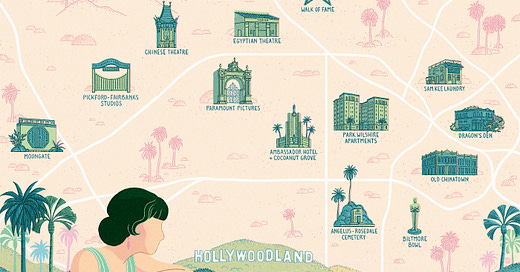



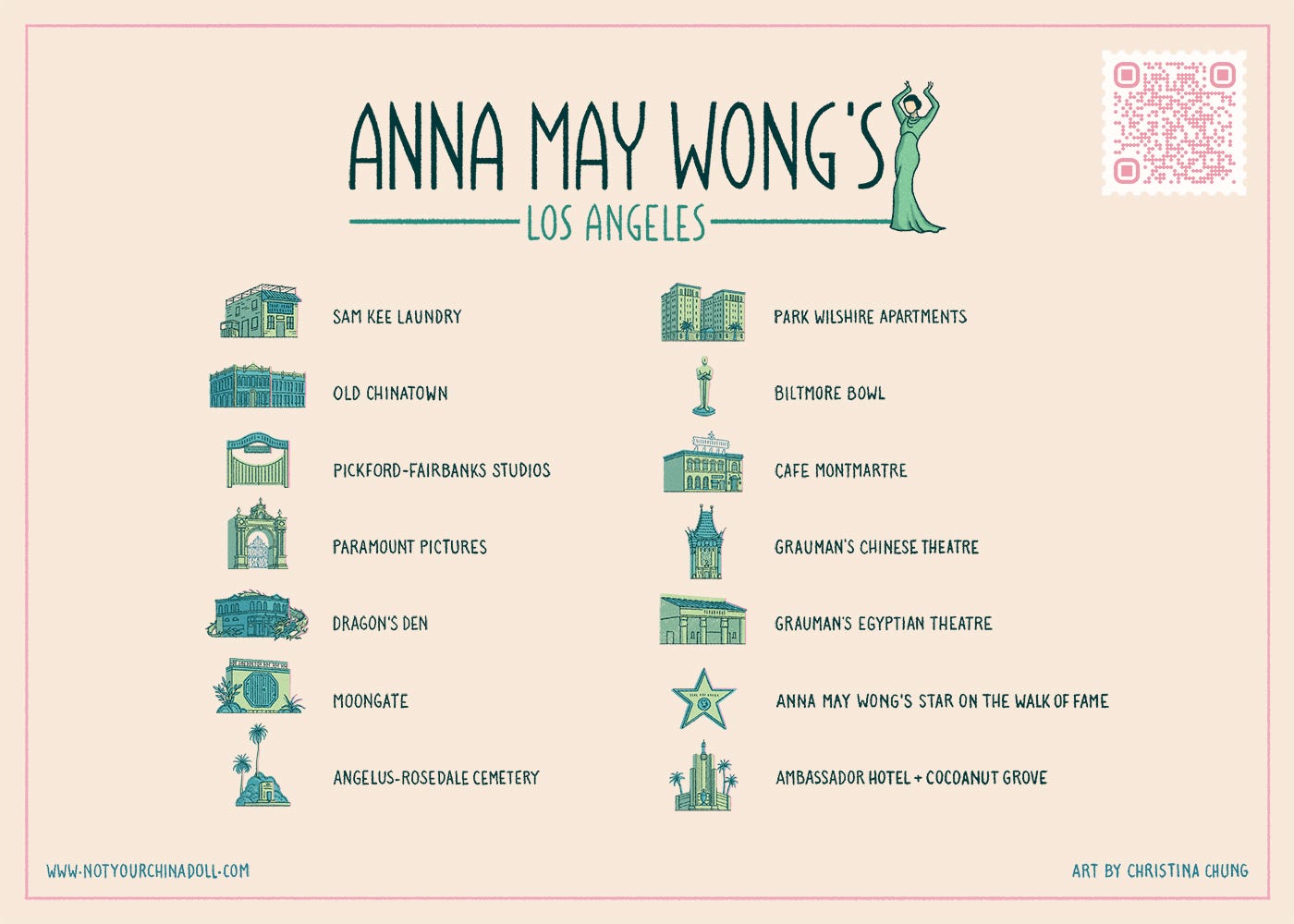
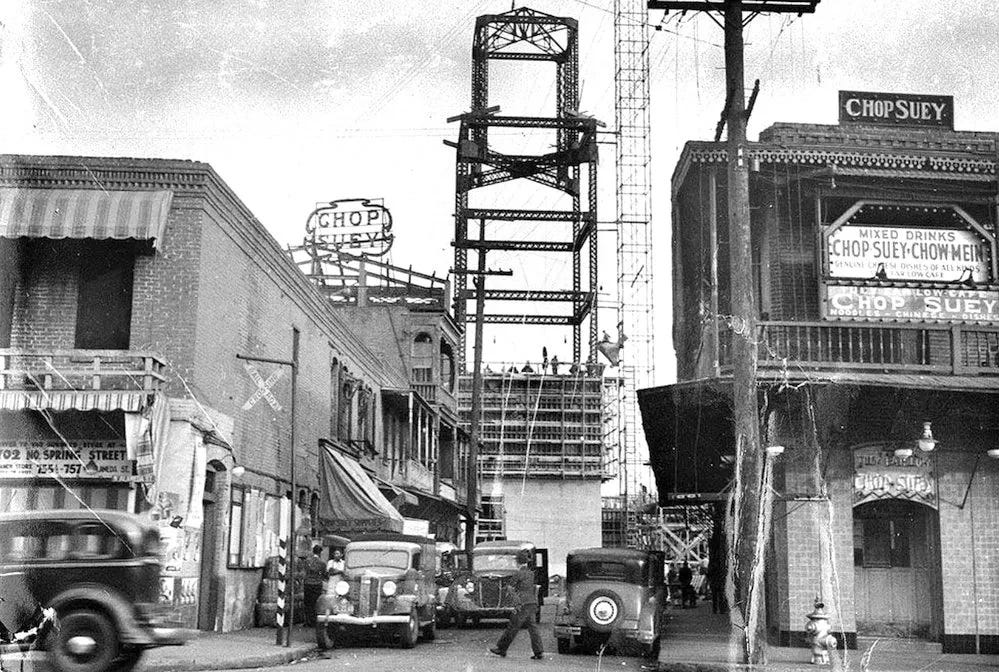
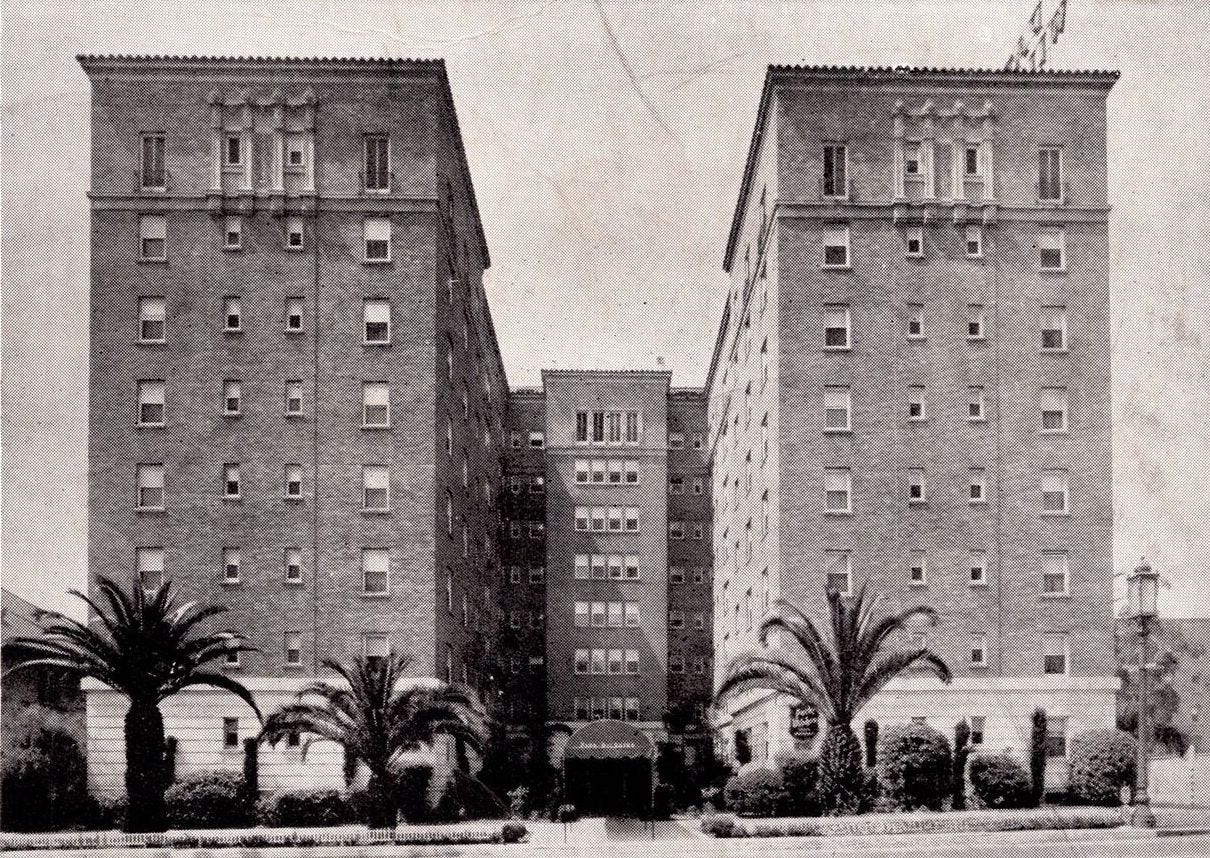
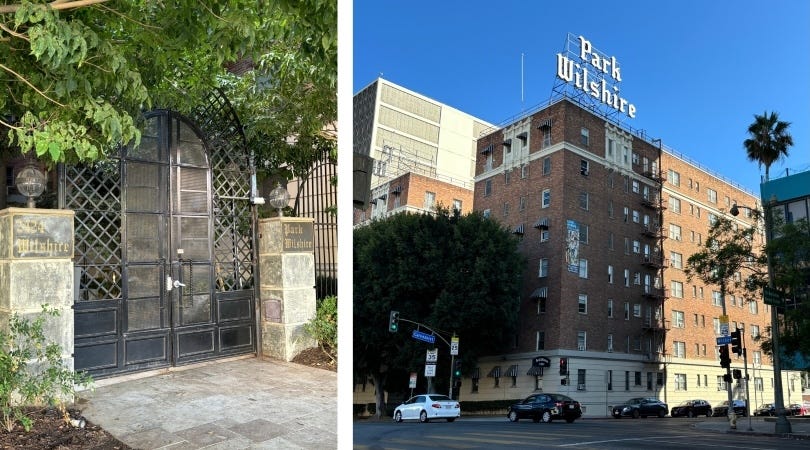
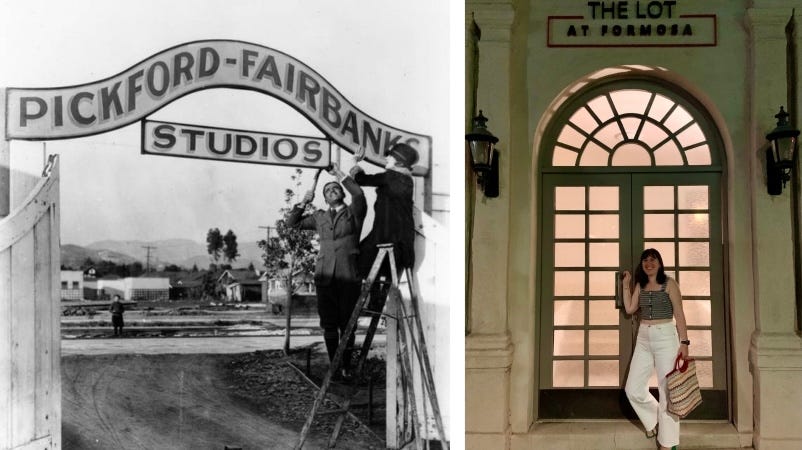
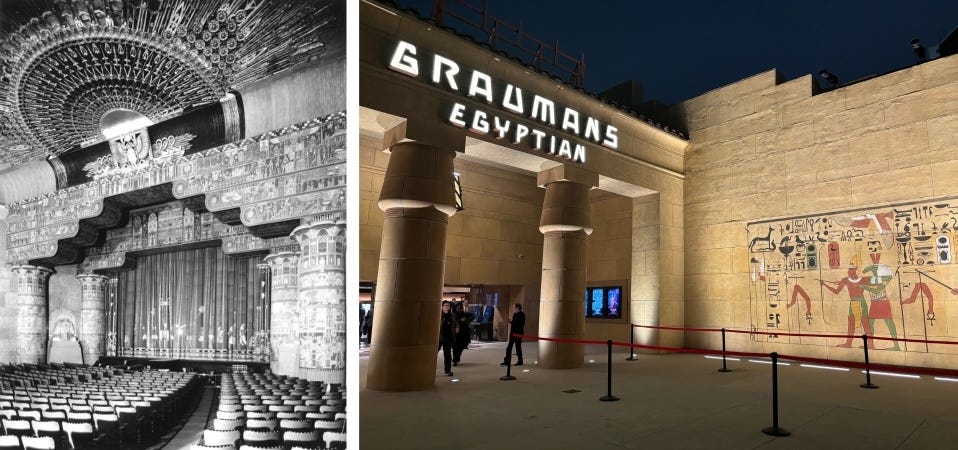
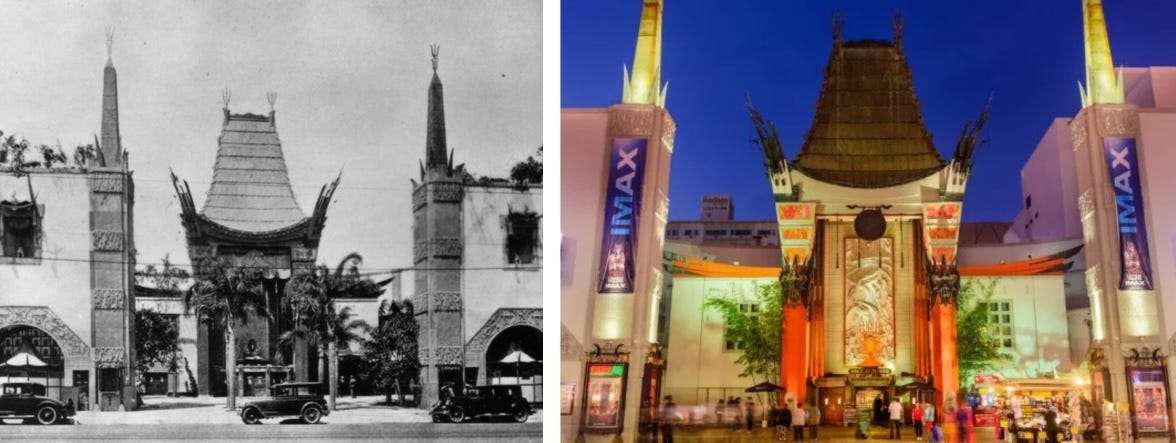
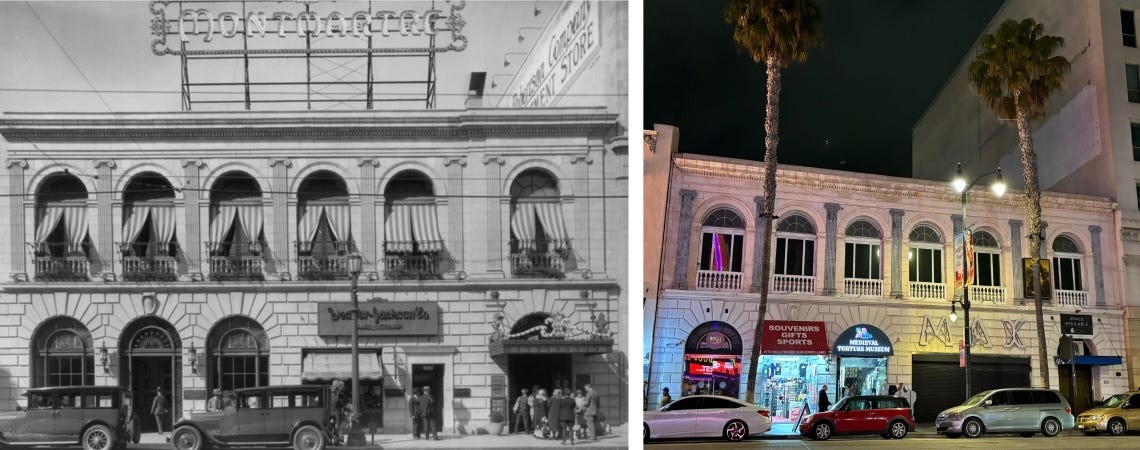
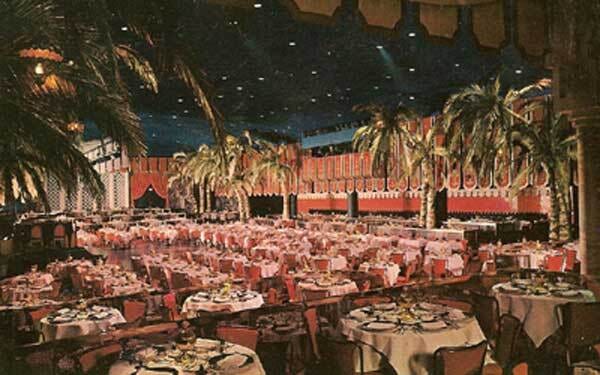
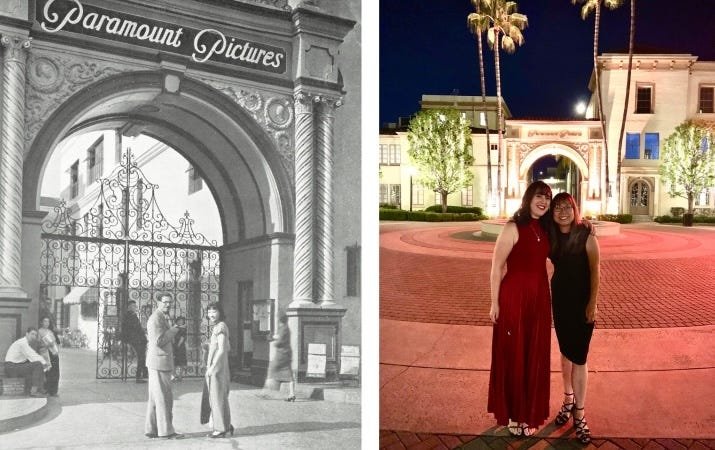
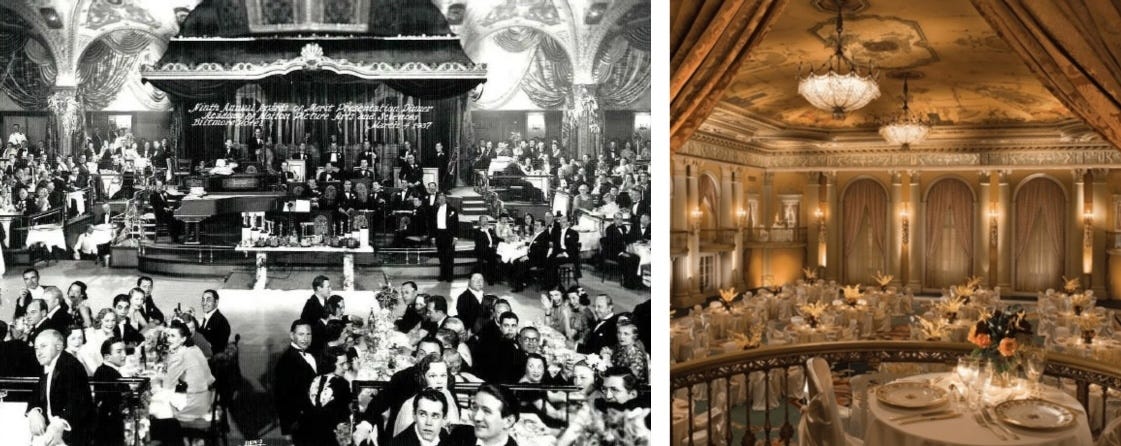
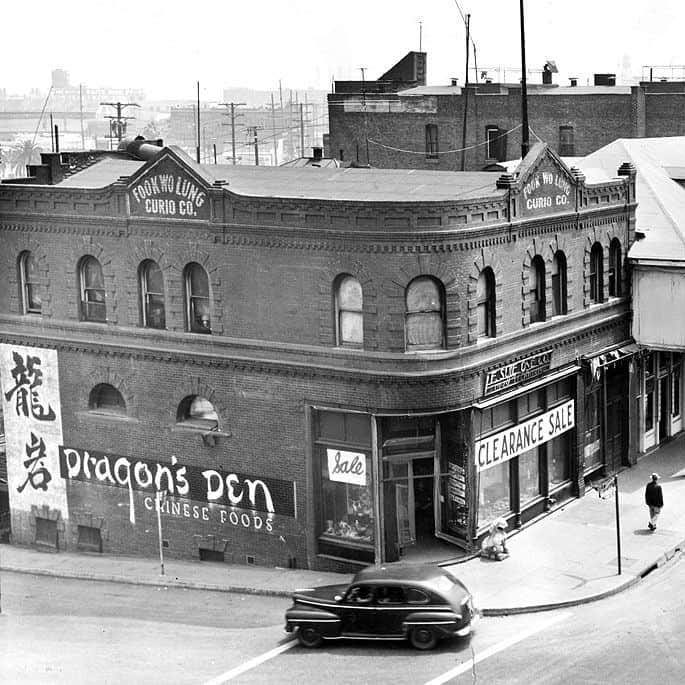

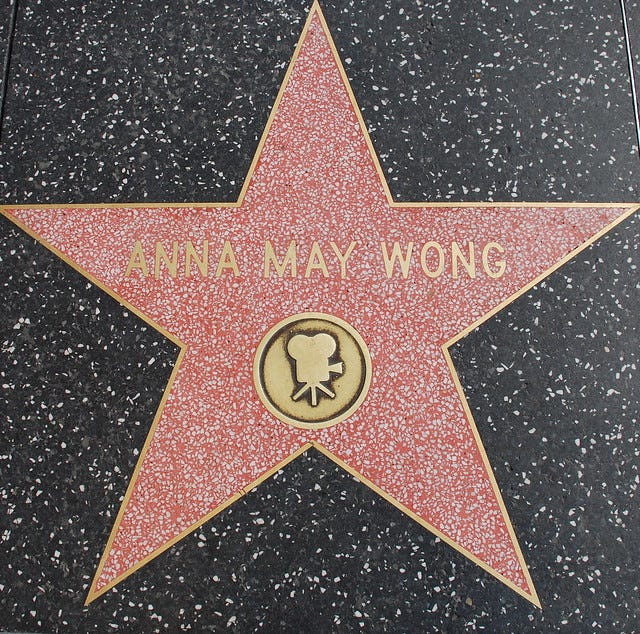
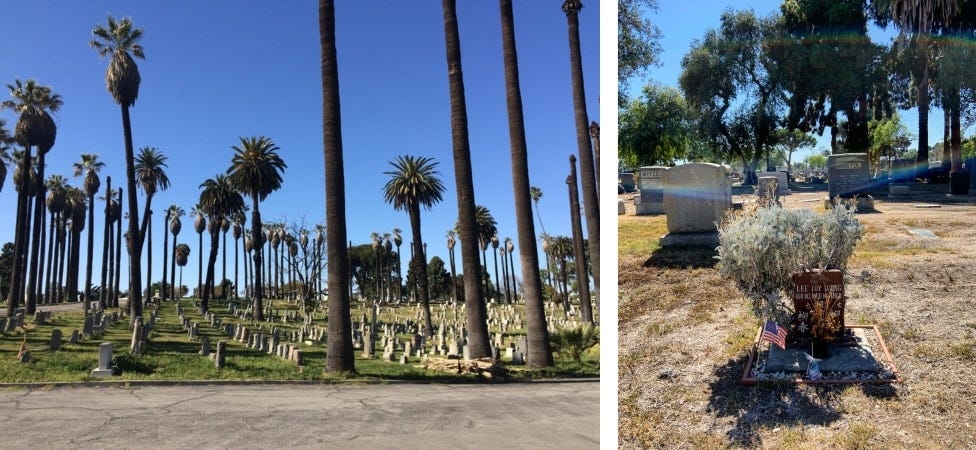
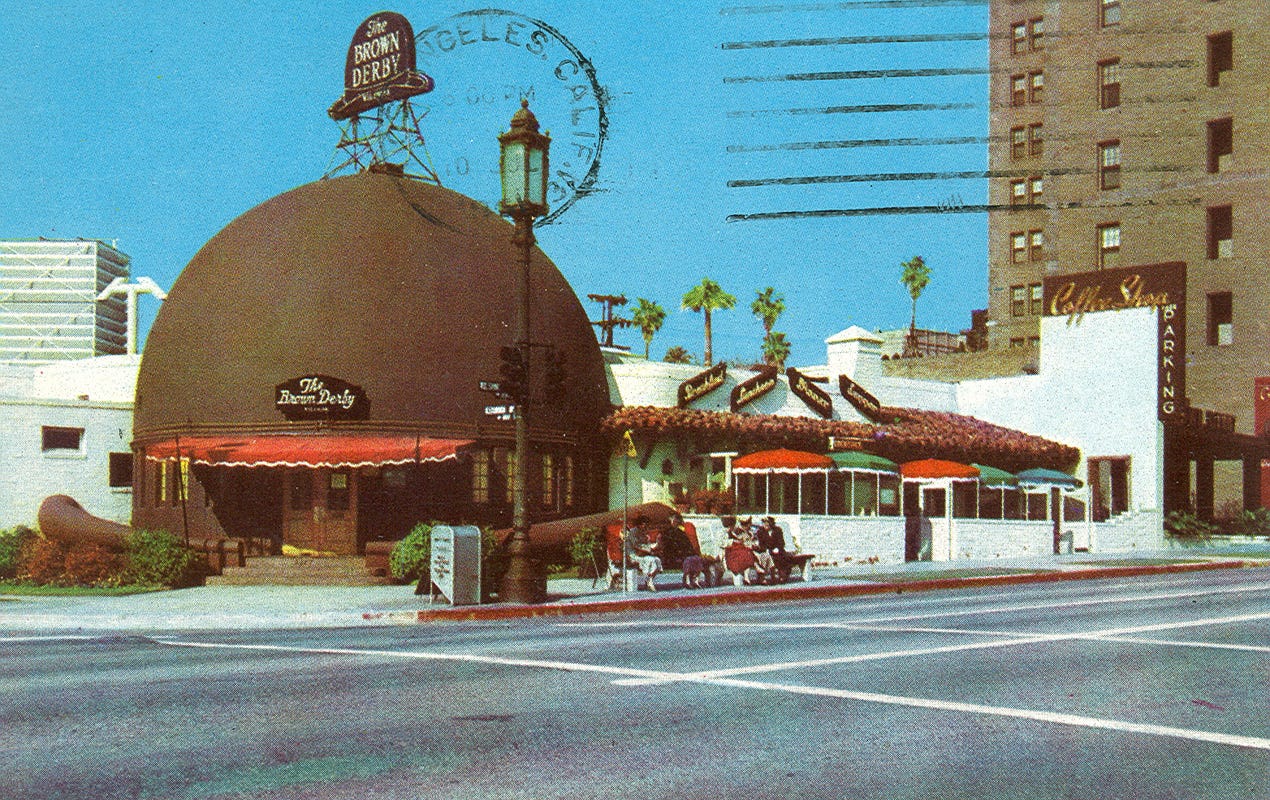
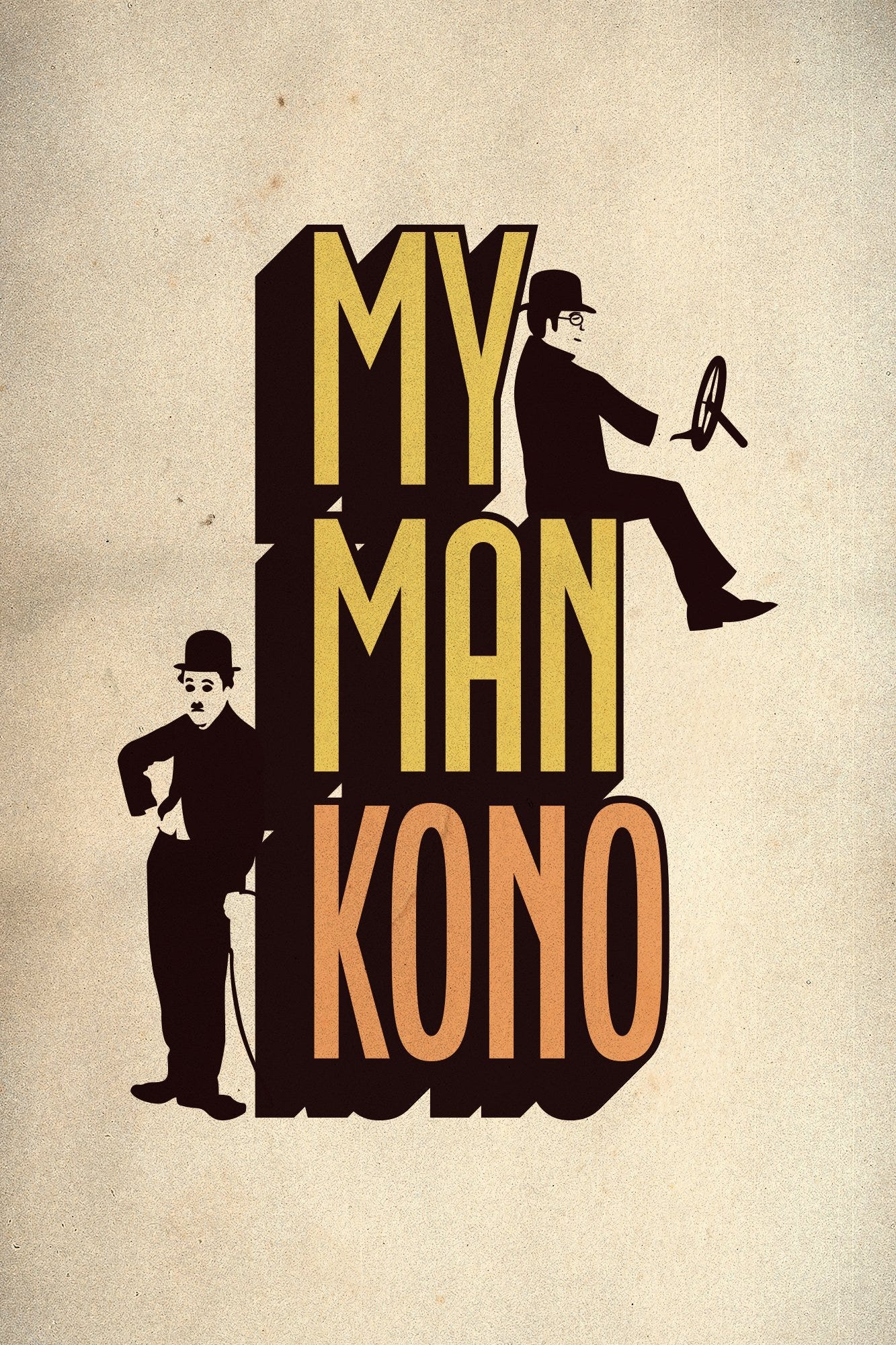
What a marvellous map. If I ever get to LA, I'll definitely use it!
Loved reading this! Thanks so much for the shout out 💖